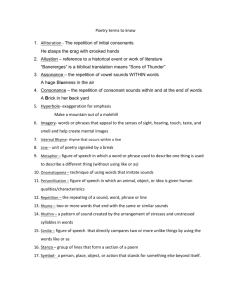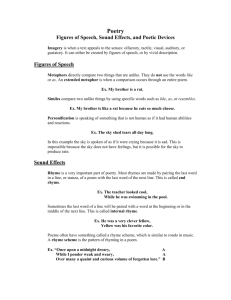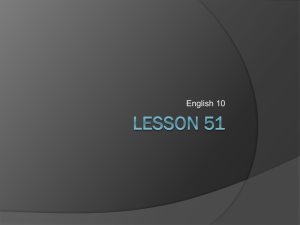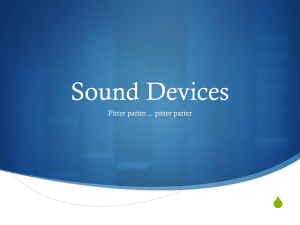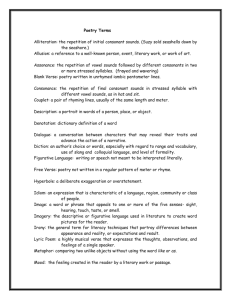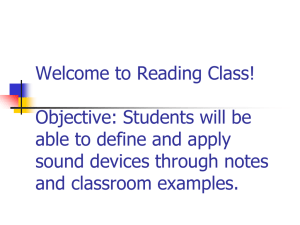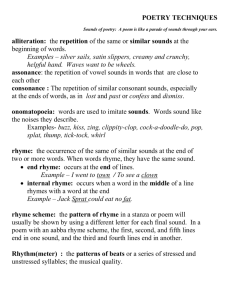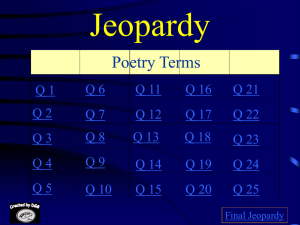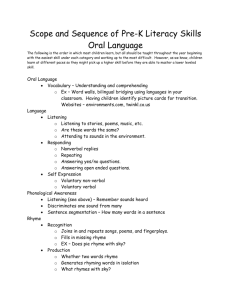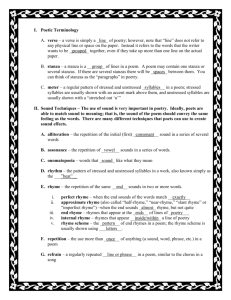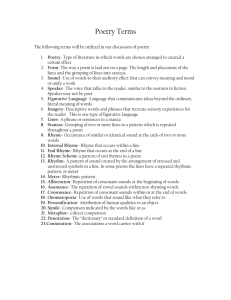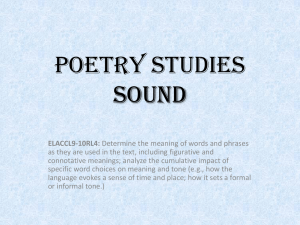Basic Poetry Terms Literary Devices: personification
advertisement
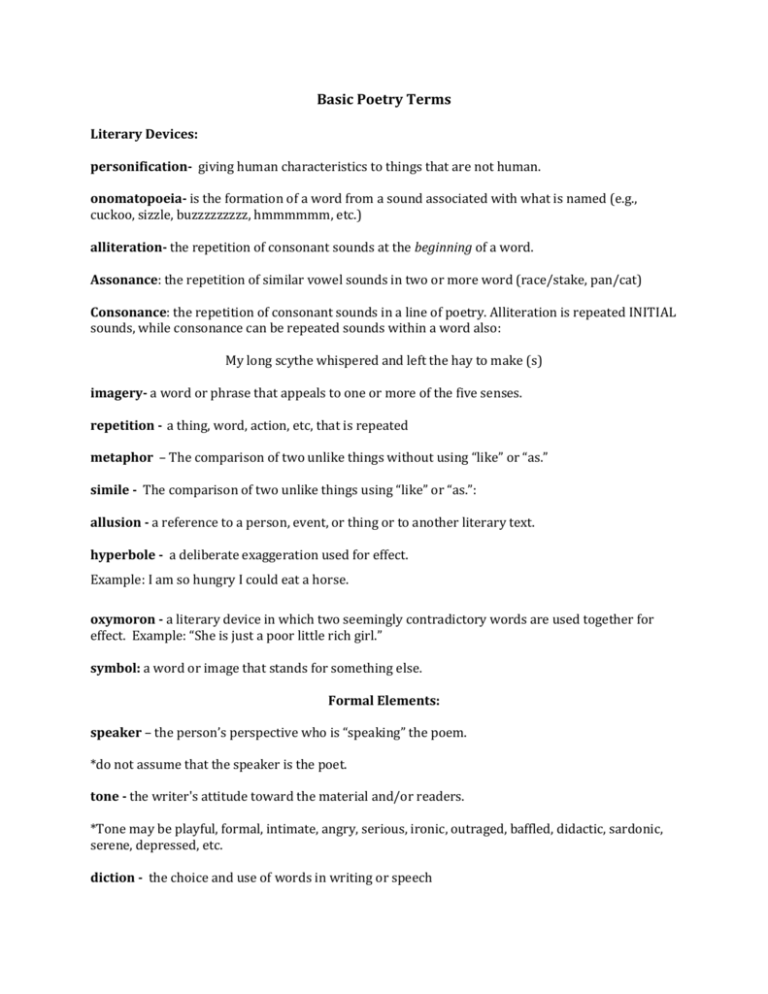
Basic Poetry Terms Literary Devices: personification- giving human characteristics to things that are not human. onomatopoeia- is the formation of a word from a sound associated with what is named (e.g., cuckoo, sizzle, buzzzzzzzzz, hmmmmmm, etc.) alliteration- the repetition of consonant sounds at the beginning of a word. Assonance: the repetition of similar vowel sounds in two or more word (race/stake, pan/cat) Consonance: the repetition of consonant sounds in a line of poetry. Alliteration is repeated INITIAL sounds, while consonance can be repeated sounds within a word also: My long scythe whispered and left the hay to make (s) imagery- a word or phrase that appeals to one or more of the five senses. repetition - a thing, word, action, etc, that is repeated metaphor – The comparison of two unlike things without using “like” or “as.” simile - The comparison of two unlike things using “like” or “as.”: allusion - a reference to a person, event, or thing or to another literary text. hyperbole - a deliberate exaggeration used for effect. Example: I am so hungry I could eat a horse. oxymoron - a literary device in which two seemingly contradictory words are used together for effect. Example: “She is just a poor little rich girl.” symbol: a word or image that stands for something else. Formal Elements: speaker – the person’s perspective who is “speaking” the poem. *do not assume that the speaker is the poet. tone - the writer's attitude toward the material and/or readers. *Tone may be playful, formal, intimate, angry, serious, ironic, outraged, baffled, didactic, sardonic, serene, depressed, etc. diction - the choice and use of words in writing or speech *Diction is effective when the appropriate words are used for the appropriate audience. *The two most common adjectives used to describe diction are formal and informal. rhyme- the repetition of sounds at the ends of words. In perfect rhymes, the syllables are identical, the stress is identical, and only the initial letters are different (tree/free, sack/back, cat/rat) Slant rhymes, or imperfect rhymes, are almost perfect, but not quite: Baa Baa black sheep have you any wool? Yes sir yes sir three bags full. An eye rhyme, or sight rhyme, is when words look alike, but they are pronounced differently (though/rough, love/move, good/mood) An internal rhyme is when two or more words in the same line of the poem rhyme: For he ate of Jesse’s bread and he slept in Jesse’s bed, Then he laid poor Jesse in his grave. (from Jesse James) A rhyme scheme is the pattern of a rhyme (if it has one – not all poems rhyme). We designate the first rhyme sound as “a” and the second as “b”: Let us not to the marriage of true minds (a) Admit impediments. Love is not love (b) Which alters when it alteration finds, (a) Or bends with the remover to remove (b) …. (from Shakespeare) mood (n.)- the overall feeling or emotion conveyed to the reader in a work of literature. theme- A central or dominating idea in a literary work. (the “message” or the “point”) topic – what is literally discussed in the poem stanza- a formal division of the lines of poetry. *You can most easily compare this to the paragraph in prose Denotation - the literal, dictionary meaning of a word Snake - "any of numerous scaly, legless, sometimes venomous reptiles having a long, tapering, cylindrical body and found in most tropical and temperate regions." Connotation – the suggested or associated meaning of a word Snake - evil or dangerous.
